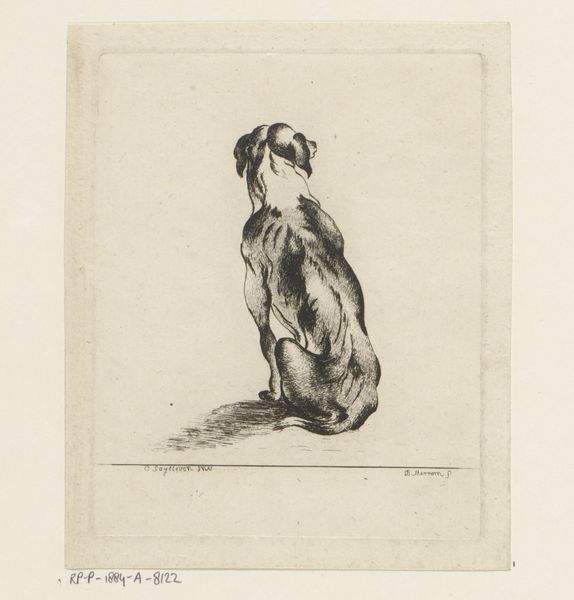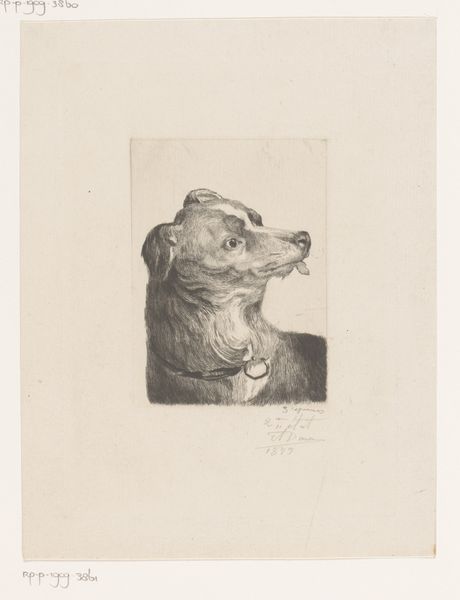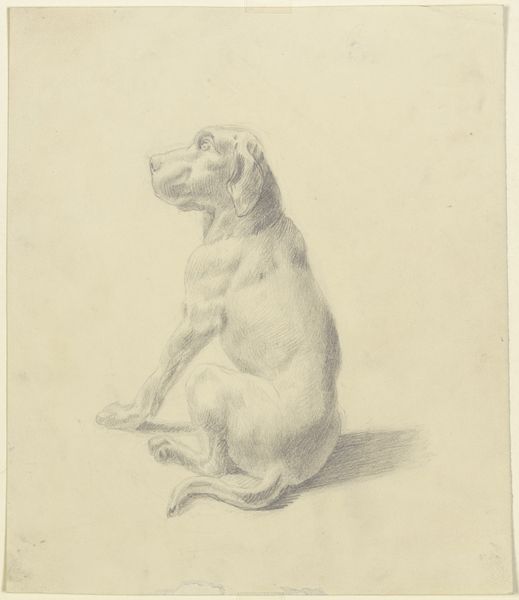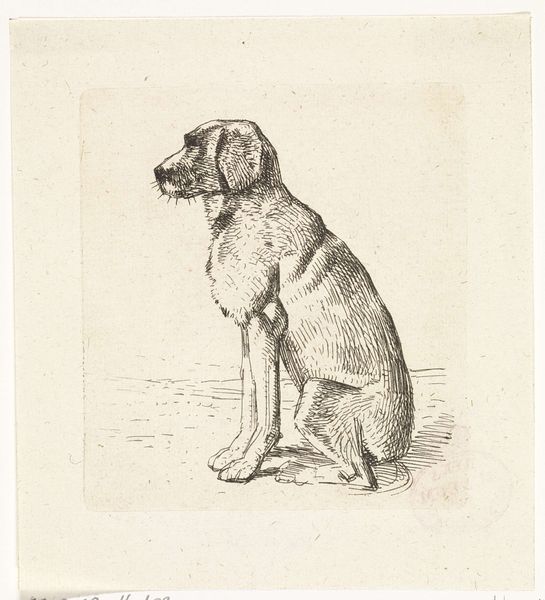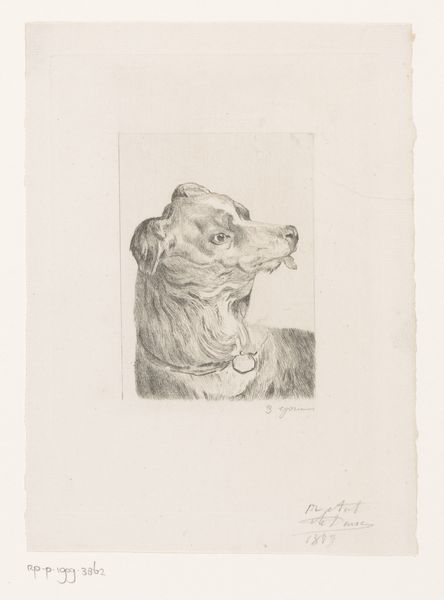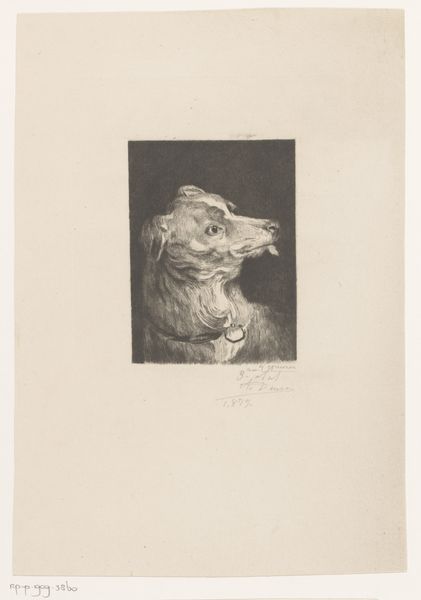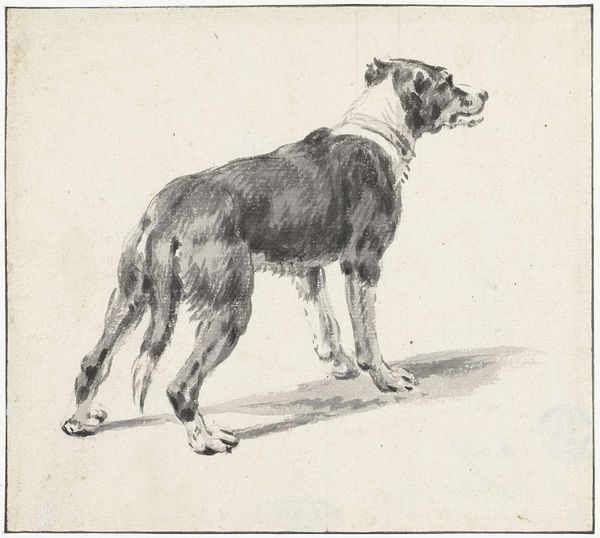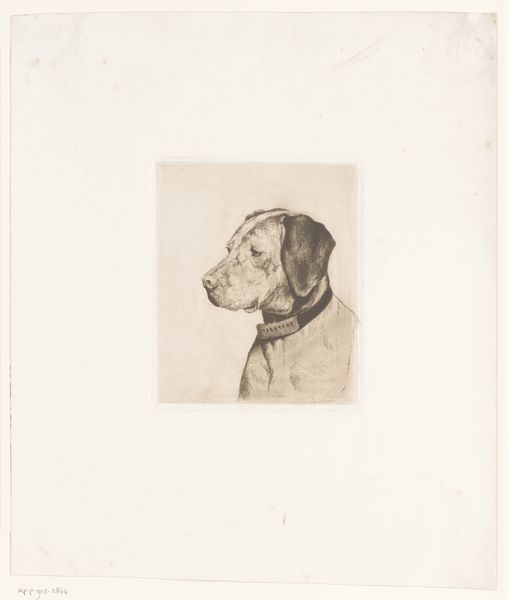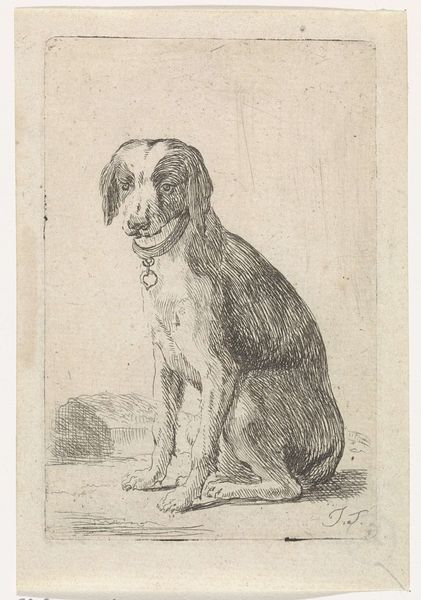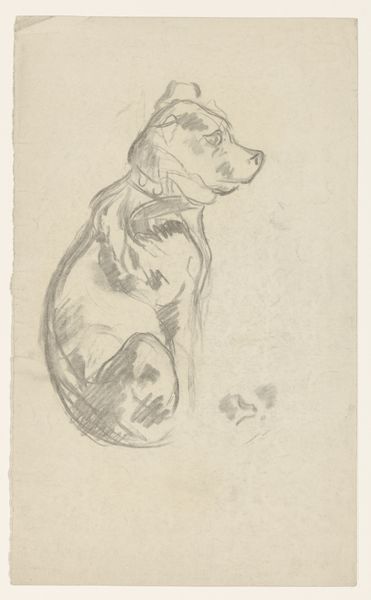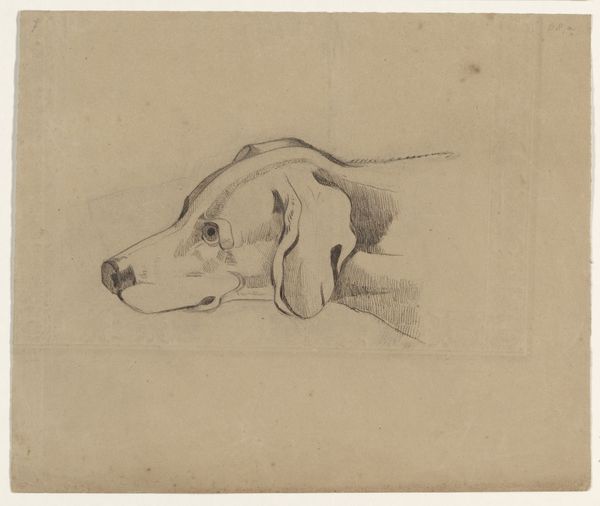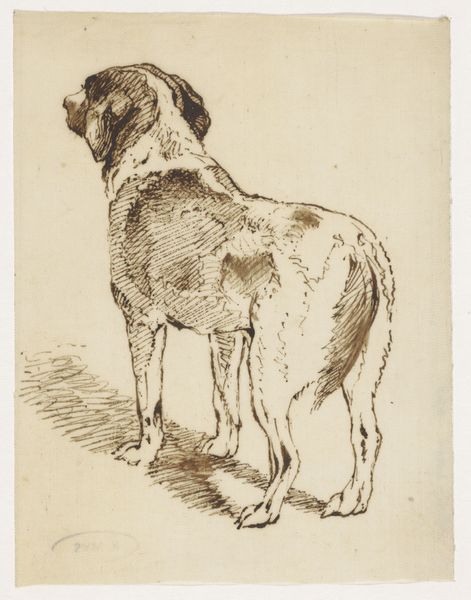
drawing, print, etching, engraving
#
portrait
#
drawing
#
baroque
#
animal
# print
#
etching
#
dog
#
figuration
#
line
#
engraving
#
realism
Dimensions: height 133 mm, width 105 mm
Copyright: Rijks Museum: Open Domain
Curator: What a forlorn creature, this pup. You can practically feel his weariness. Editor: Indeed. Here we have a print from around 1700 to 1800, titled "Zittende hond op de rug gezien," which translates to "Sitting dog seen from the back," attributed to D. Merrem. It is a study in etching, engraving, and perhaps even a touch of drawing. It strikes me as somewhat Baroque in style. Curator: Baroque? Perhaps in its rather dramatic lighting! I see such longing, like he's waiting for a master who might never return. Editor: Consider how the portrayal of animals reflects the social order of the time. Dogs were often symbolic of loyalty, subservience, but also class status, with specific breeds marking wealth and privilege. A dog presented from this vantage raises interesting questions about who controls the narrative. We aren't even granted their gaze, it seems to signal subjugation. Curator: Mmm, the unseen master's gaze imposing over the dog’s vulnerable state... a melancholic power dynamic captured with so much gentle skill. Editor: Exactly. While seemingly a simple animal study, the piece hints at complex relationships within a hierarchical society. It's not just a dog; it's a stand-in for themes of dependence and the social construction of relationships under a more encompassing political order. The positioning invites a lot of interpretation and makes it something bigger than just a quaint drawing. Curator: Agreed! It does give us plenty to mull over, doesn't it? I feel as though even without intention it conveys a message. Editor: Ultimately, it shows that art doesn't exist in a vacuum. Even an 18th-century engraving of a dog can reveal traces of then-current issues. Curator: A furry lens into society. How wonderfully thought-provoking. Thanks for walking through the art with me. Editor: Of course. Analyzing art is all about bringing voices together to challenge, expand, and understand how society evolves and reflects upon itself through material production.
Comments
No comments
Be the first to comment and join the conversation on the ultimate creative platform.
